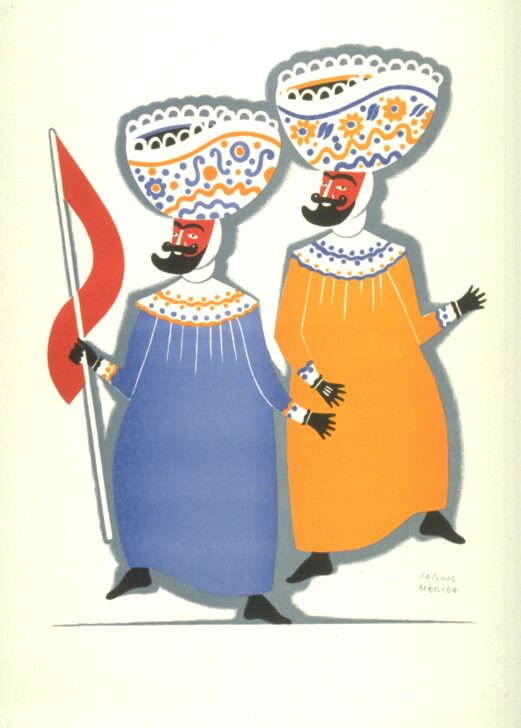Danza de los Chinelos
Carlos Mérida; F.A.R. Publishers Ltd.

Description
Subject Matter:
This is one of a series of ten prints that depict the traditional dances of México. Mérida was the co-founder of the dance school for the Secretariat of Education (Escuela de la Danza de la Secretaría de Educación Pública), which worked to preserve the native dances of the region. In addition to this set, at this time, he produced a number of series that cataloged the popular arts and industries of Mexico and his native Guatemala.
This print depicts the Dance of the Chinelos. The term "Chinelos" comes from the Nahuatl word "zineloquie," meaning "disguised." This dance was developed after Spanish conquest in order to mock the fancy dress of the Europeans, but the origins of the dance's components have more ancient Aztec origins. The male characters in this dance are dressed as women, with long dresses and lacey hats.
Physical Description:
In this print, two figures are centered on the page. They both wear a red mask with a pronounced black beard and mustache. The figure on the right is in an orange-yellow gown with blue detail on the white lace trim and the figure on the left a blue gown, with orange-yellow details. Their gloves and shoes are both black. Both also wear white large hats that are bowl-shaped with white, blue, and yellow-orange lace motifs. The figure on the left carries a thin red flag on a white pole.
Usage Rights:
If you are interested in using an image for a publication, please visit https://umma.umich.edu/request-image/ for more information and to fill out the online Image Rights and Reproductions Request Form.